Edamame beans are a tasty, versatile ingredient that can be used in many dishes.
They are high in protein, fiber, and other nutrients, making them a great choice for vegetarians and vegans alike.
Unfortunately, edamame beans can be difficult to find or too expensive for some budgets.
Luckily there are several alternatives that provide similar nutrition and flavor profiles.
In this article, I will discuss the 7 best substitutes for edamame beans so you can still enjoy your favorite recipes without breaking the bank.
What Are Edamame Beans?
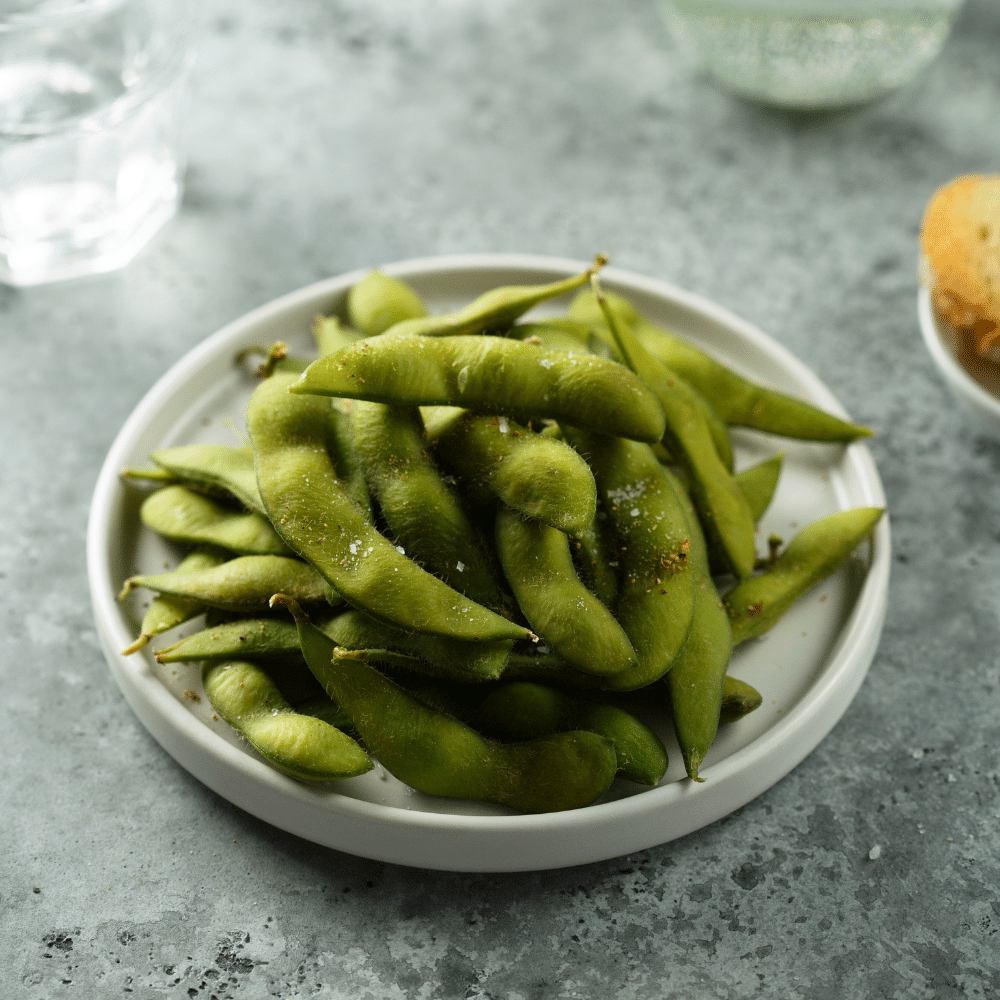
Edamame beans are immature soybeans that are harvested before they have had a chance to harden and dry out.
They are usually boiled in salted water, then served as an appetizer or side dish.
Edamame beans have a mild, nutty flavor and can be eaten on their own or added to salads, soups, stir-fries, and other dishes.
Edamame is high in protein and fiber and low in fat.
It also contains essential vitamins such as folate, vitamin K1, manganese, iron, magnesium, phosphorus and copper.
Additionally, it is rich in antioxidants which help protect the body from free radical damage caused by environmental toxins.
The 7 Best Substitutes for Edamame Beans
Edamame beans are a great source of nutrition, but they can be hard to find in some places.
If you’re looking for an alternative, here are seven substitutes that will still give you the same benefits:
1. Green peas

Green peas are a type of legume, and they are small, round, and green in color.
They grow in pods that contain two to three peas each.
Green peas have a sweet taste and are usually eaten cooked or frozen.
How To Cook With Green Peas
Fresh green peas should be shelled before cooking.
Boiling is the most common way to cook them, but they can also be steamed or microwaved for a few minutes until tender.
Frozen green peas can simply be boiled or heated in the microwave without thawing first.
Once cooked, green peas can be used as an accompaniment to many dishes such as curries and stir-fries, added to salads and soups, mashed into dips and spreads, or served alone as a side dish with butter or cheese sauce.
Common Uses
Green peas are often used in Indian cuisine such as samosas and aloo gobi (potato curry).
They can also be added to pasta sauces for extra flavor and texture.
In Chinese cuisine they may be stir-fried with other vegetables such as carrots or mushrooms; while in Japanese cuisine they are often found in tempura batter alongside shrimp or squid rings.
Finally, green peas make a great addition to risottos, casseroles, quiches, omelettes, frittatas – even smoothies!
2. Fava beans
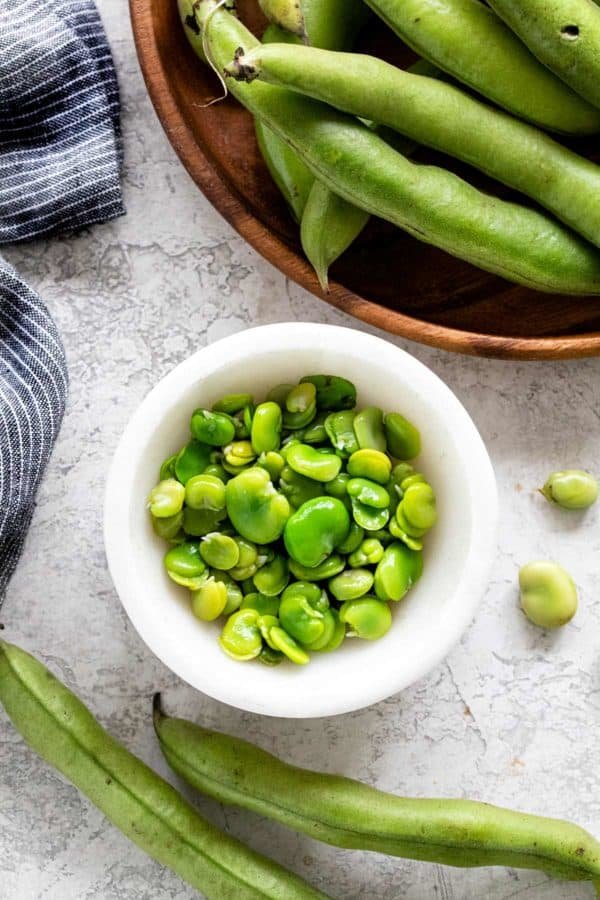
Fava beans, also known as broad beans, are a type of legume that grows in a pod.
The pods can range from two to four inches long and have a soft texture and sweet flavor.
Inside the pods are small green beans with an outer skin that needs to be removed before eating.
How To Cook With Fava Beans
Fava beans can be cooked in many different ways including boiling, steaming, sautéing, or roasting.
When boiling fava beans it is important to make sure they are cooked until tender but not mushy.
If you plan on roasting them then lightly coat them with oil and seasonings before placing them in the oven at 375°F for about 15 minutes or until they reach your desired level of crispiness.
Common Uses
Fava beans can be enjoyed as a side dish or added to salads, soups, stews, stir-fries, pasta dishes and more!
They can also be mashed into hummus-like dips or pureed into spreads for sandwiches and wraps.
Additionally, fava beans make a great addition to veggie burgers as well as grain bowls for extra protein and fiber content.
3. Lima beans

Lima beans, also known as butter beans, are a type of legume with a mild flavor and creamy texture.
The most common variety is the large-seeded Fordhook lima bean, which has pale green skin and white flesh.
Other varieties include the baby lima bean, which is smaller in size and can be either white or speckled; the sieva lima bean, which is small and light green in color; and the Christmas lima bean, which is dark red or maroon.
How To Cook With Lima Beans
Lima beans can be cooked in many ways.
They can be boiled until tender (about 20 minutes) or simmered until soft (about an hour).
For a quicker cooking time, they can also be steamed for 8 to 10 minutes.
When boiling or simmering dried beans, it’s important to add enough water so that they remain covered throughout cooking. If you’re using canned beans, simply drain them before use.
Common Uses for Lima Beans
Lima beans are popularly used in soups and stews due to their hearty texture when cooked.
They also make a great addition to salads when served cold.
In some cultures, they are even enjoyed as snacks!
In addition to being eaten on their own, lima beans can also be mashed into dips or purées for sandwiches or tacos – adding creaminess without any dairy products!
4. Mukimames
Mukimames are small, green beans native to Japan.
They have a slightly sweet taste and crunchy texture that makes them perfect for snacking or adding to salads.
The name mukimame translates to “unripe soybeans” in Japanese, which is fitting since they look like edamame beans but are harvested before they reach full maturity.
How To Cook With Mukimames
The best way to cook mukimames is by boiling or steaming them until tender.
Boil them for about 10 minutes and then drain off the water.
You can season with salt and pepper or add your favorite herbs and spices for extra flavor.
If you prefer a crunchier texture, try roasting the beans in the oven at 375°F (190°C) for 15-20 minutes.
Common Uses
Mukimames can be used as a side dish or tossed into salads, stir-fries, soups, stews, curries, and pasta dishes.
They also make an excellent snack when roasted with oil and spices such as garlic powder or chili powder.
You can also mix them into veggie burgers or meatloaf mixes for added protein and fiber content.
5. Sugar Snap Peas
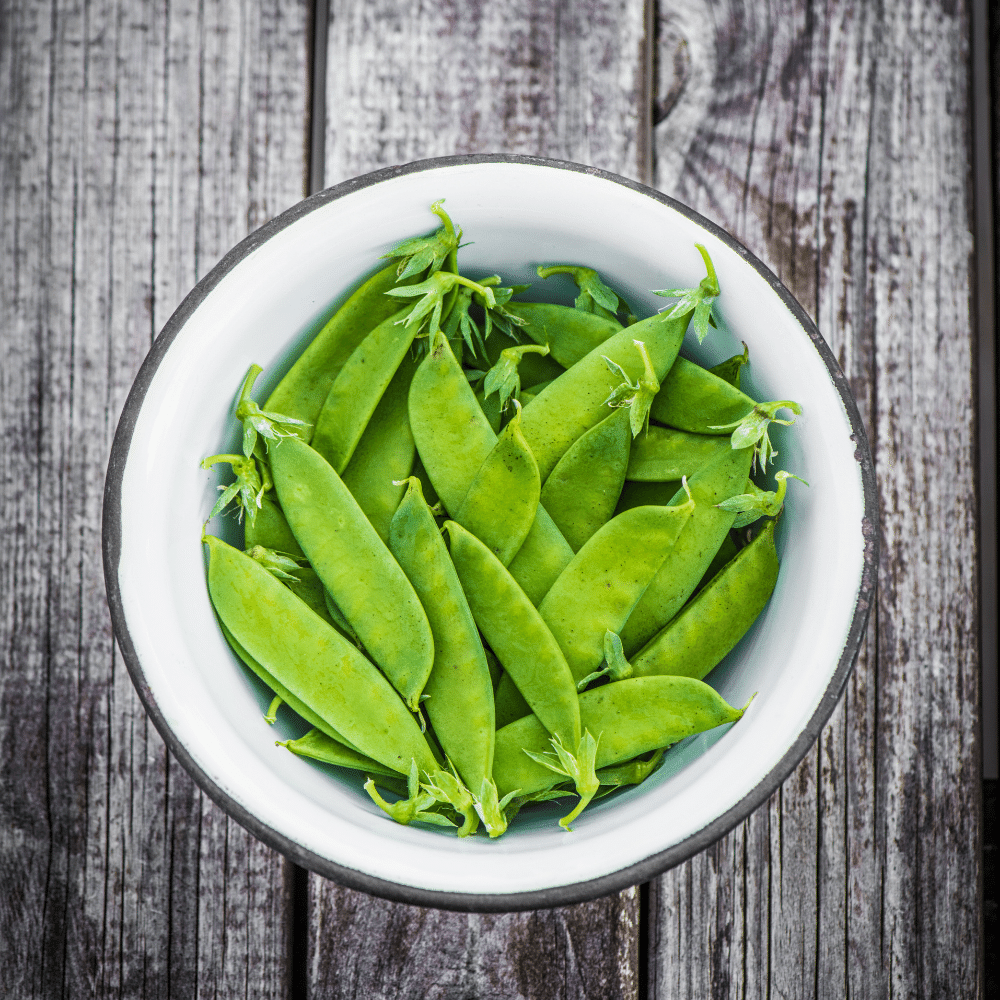
Sugar snap peas are a type of edible-pod pea that is sweet and crunchy.
They are similar to snow peas but have rounder, plumper pods with thicker walls.
The young pods contain small, tender seeds that develop as the pod matures.
When eaten raw, sugar snap peas have a crisp texture and sweet flavor.
How To Cook With Sugar Snap Peas
Sugar snap peas can be enjoyed cooked or raw.
For cooking, they are best when quickly blanched in boiling water for 1-2 minutes before draining and serving with butter or olive oil and seasonings such as salt, pepper, garlic powder, or fresh herbs.
They can also be added to stir fries or sautéed in a pan with other vegetables like mushrooms and onions.
Common Uses
Raw sugar snap peas make an excellent snack on their own or served with dips such as hummus or guacamole.
They can also be used in salads either whole or chopped into smaller pieces for more even distribution throughout the dish.
Finally, they make an excellent addition to soups and stews where they will provide sweetness and crunchiness to the dish while still being able to hold their shape during cooking time!
6. Garbanzo beans

Garbanzo beans, also known as chickpeas, are a type of legume native to the Middle East and Mediterranean regions.
They are high in protein and fiber, making them a popular choice for vegetarians and vegans.
Garbanzo beans have a nutty flavor and can be used in many dishes.
How To Cook With Garbanzo Beans
The most common way to cook garbanzo beans is by boiling or simmering them with water until they are tender.
You can also bake or roast them in the oven with spices or herbs for an added flavor boost.
If you’re using canned garbanzos, simply drain off the liquid before adding them to your dish.
Common Uses For Garbanzo Beans
There are many ways to use garbanzos in cooking!
They make a great addition to soups, stews, salads, casseroles, curries, hummus and dips.
They can also be pureed into spreads like falafel or blended into smoothies for extra protein and fiber.
Additionally, roasted garbanzos make a great snack when tossed with olive oil and spices like garlic powder or chili powder!
7. Green Beans
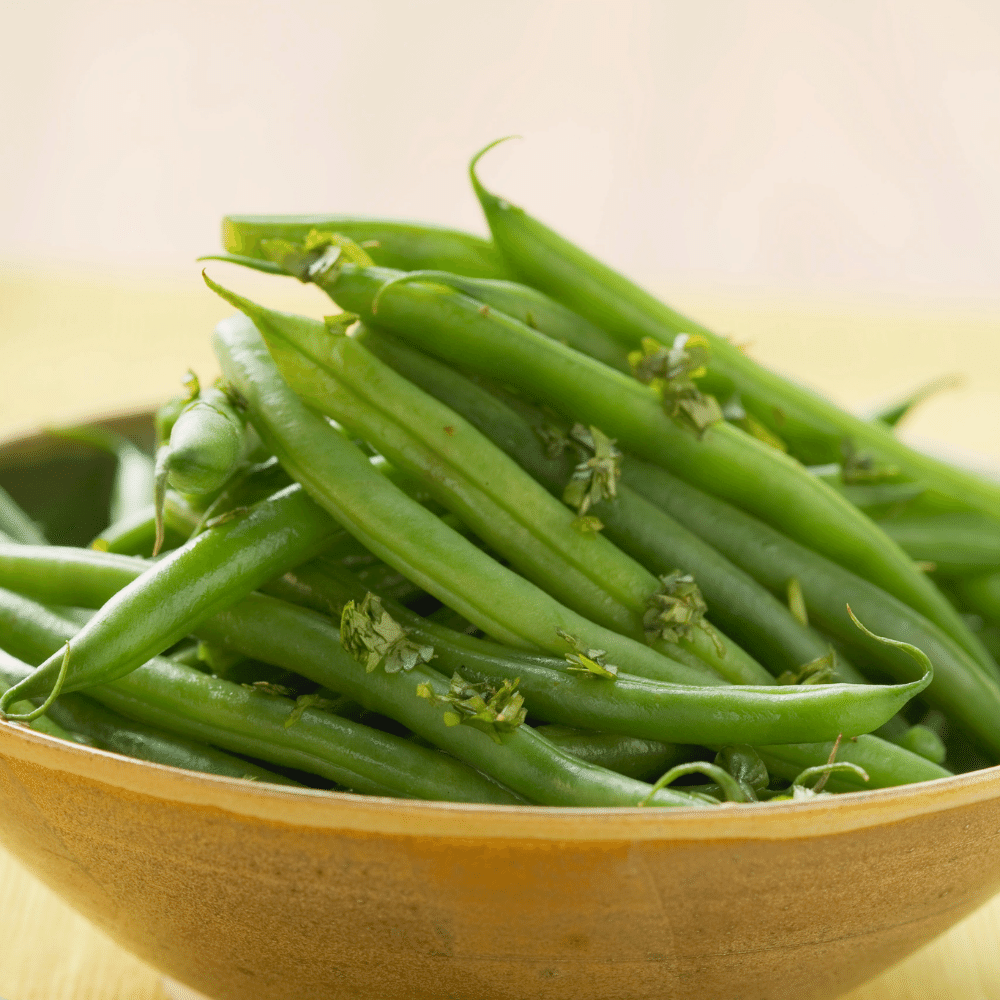
Green beans, also known as string beans or snap beans, are a variety of common bean (Phaseolus vulgaris) that have been bred to be eaten fresh while the pods are still green.
They are related to kidney and lima beans, but do not require shelling before eating.
How To Cook With Green Beans
Green beans can be boiled, steamed, microwaved or sautéed.
For boiling or steaming, bring a pot of water to a boil and add the green beans.
Boil for 3-5 minutes until desired tenderness is reached.
For sautéing or microwaving, heat some oil in a pan over medium heat and add the green beans.
Sauté for 5-7 minutes until desired tenderness is reached. Microwave on high for 2-3 minutes until desired tenderness is reached.
Common Uses
Green beans are often served as side dishes with dinner entrees such as steak or chicken, but they can also be enjoyed raw in salads or sandwiches.
They can also be used in soups and stews and make an excellent addition to stir fry dishes with other vegetables like carrots and onions.
FAQ
Can you replace peas with edamame?
Yes, edamame can be used as a substitute for peas in many recipes.
Edamame is a variety of immature soybean that can be used in a multitude of dishes, from stews to salads.
Unlike peas, edamame is a much firmer texture, but with a similar flavor.
When using edamame as a substitute for peas, it’s important to remember that it cooks more quickly than peas and should be added to the dish at the end of the cooking process to prevent them from becoming too mushy.
Can I use soya beans instead of edamame beans?
Yes, you can use soya beans instead of edamame beans. Soya beans and soy beans are the same thing – the names are often used interchangeably and the same is true of soya sauce and soy sauce.
Edamame is a young, green variety of soya bean that is popularly used in many dishes. In Japanese, soya beans are known as daizu.
However, you should note that edamame has a mild taste and a crunchy texture that soya beans may not have. Despite this, soya beans can still be used as a suitable substitute for edamame in recipes.
Can you substitute lima beans for edamame?
Yes, you can substitute lima beans for edamame and vice versa. However, it is important to take into account the different textures and flavors that each ingredient will bring to the dish. Lima beans are larger and have a starchy, nutty taste, while edamame are smaller and have a sweeter, more delicate flavor.
Additionally, lima beans are often cooked until tender, whereas edamame are typically served lightly cooked or raw. Depending on the dish, one ingredient may be more appropriate than the other and will help to create the desired texture and flavor.
Conclusion
In conclusion, edamame beans are a delicious and nutritious addition to any meal, but if you don’t have them on hand, there are plenty of other options available for a tasty substitute.
The best substitutes for edamame beans are green peas, fava beans, lima beans, mukimames, sugar snap peas, garbanzo beans, and green beans.
All of these beans have a similar texture and flavor profile to edamame beans and can be used interchangeably in recipes.
Try using a combination of these beans to create an exciting and flavorful dish that your family and friends will love.
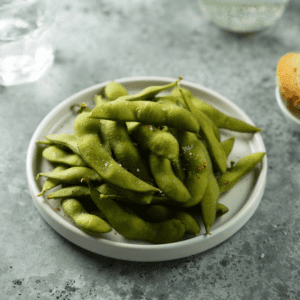
The 7 Best Substitutes for Edamame Beans
Ingredients
- Green peas
- Fava beans
- Lima beans
- Mukimames
- Sugar Snap Peas
- Garbanzo beans
- Green Beans
Instructions
- Pick your favorite substitute from the list above.
- Follow cooking directions for your selected substitute with the proper ratio of ingredients.
Jenny has always been passionate about cooking, and she uses her platform to share her joy of food with others. Her recipes are easy to follow, and she loves giving tips and tricks to help others create their own unique culinary creations.

